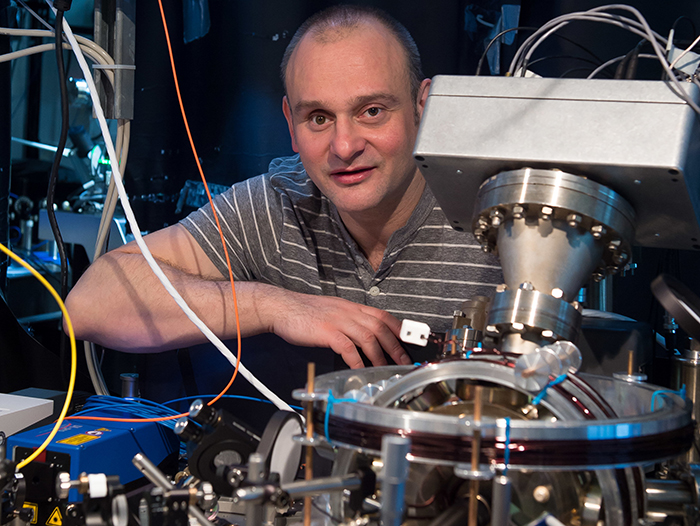One of the difficulties in developing quantum computers to their full potential – and there are quite a few – is cutting out interference.
With technology as delicate as this, any kind of environmental noise or imperfection that affects the careful balance of a quantum computer could cause havoc with its calculations.
To overcome this massive problem, a team of researchers has developed a a new method of quantum computing compensation - a way to make sure that changes in the initial parameters of a quantum computation don't have a substantial effect on the end results.
That should help insulate large-scale quantum computing systems against the potentially disruptive impact of outside forces, including voltages from electrical components or external electromagnetic fields – something that's crucial if quantum computers are ever going to work outside specialised setups.
"Realising this technique may have a profound impact on the ability to develop commercial ion trap quantum computers beyond use in an academic laboratory," says one of the team, Sebastian Weidt from the University of Sussex in the UK.
Quantum computing is based on qubits or quantum bits – whereas classic computing bits can be either 1 or 0, qubits can be held in superposition, meaning they can be both 1 and 0 at the same time.
That means an exponential explosion in potential processing power – if we can work out how to get enough of these qubits together and manage them effectively.
Getting qubits balanced and working as intended requires an incredible level of control and precision. That's why today's experiments only use a limited number of qubits, or can only be maintained for a short period of time.
As the number of qubits increases – which is the ultimate goal for quantum computing – keeping that control and precision gets harder and harder, because voltages, temperatures, and other factors become less predictable.
That's why the team's latest results are so exciting, since it's a step closer to solving that problem of noise and interference, and reducing the error rates they cause.
"With this advance we have made another practical step towards constructing quantum computers that can host millions of qubits," says senior researcher Winfried Hensinger, from the University of Sussex.
 Winfried Hensinger and a quantum computer setup. (University of Sussex)
Winfried Hensinger and a quantum computer setup. (University of Sussex)
The researchers managed to design a new type of Mølmer–Sørensen gate, through which quantum calculations can be made. Having first come up with a theoretical model, they ran through a barrage of practical experiments on individually charged atoms, using complicated radio frequency and microwave signals.
The model held up, and the team is now working on a quantum computer prototype that puts the new findings into action.
While you'll already see references to working quantum computers in the world today, including the lab machines used by these researchers, full-scale and fully realised quantum computing is still some way off.
In fact, it's not certain we'll ever be able to translate our theories and lab tests into actual, practical quantum computers, though scientists are certainly working hard at it. The research published here should help the technology break out of the lab and scale up.
And eventually that could make a huge difference in the fields of science where quantum computing should be most useful: medical research, drug development, weather modelling, agricultural development, and more.
"Such machines are capable of solving certain problems that even the fastest supercomputer may take billions of years to calculate and be of great benefit to humanity," says Hensinger.
"We are only starting to understand the tremendous potential of these machines."
The research has been published in Physical Review Letters.
